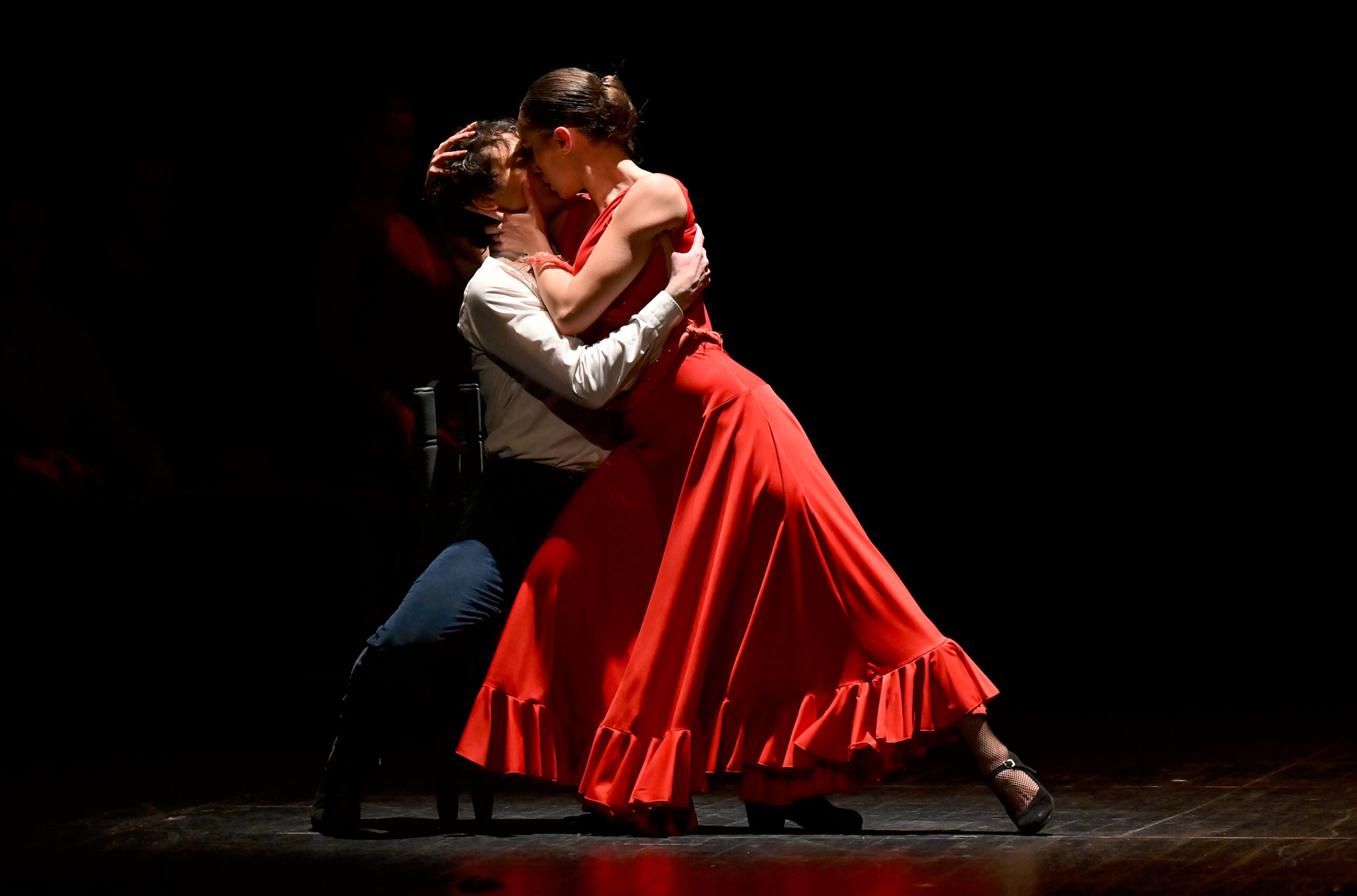His first masterpiece, Bodas de Sangre, debuted the year after starting his relationship with Marisol. His intention with this work was to pay homage to the poet, despite having to go to Rome to premiere it.
According to composer Emilio de Diego, rehearsals for the show were held at the Estudios Amor de Dios in Madrid, where Antonio had placed a sign on the door that said: Emilio is prohibited from entering. The reason was because he first wanted to perform the choreographic framework starting with Alfredo Mañas’s adaptation for ballet, only then incorporating the music .
The venue chosen for the world premiere on April 2, 1974 would be the Teatro Olimpico in Rome. The show debuts in Spain at the Teatro de la Zarzuela in Madrid during the celebration of the III International Festival of Dance. The work garnered massive acclaim, and soon begins to tour the same circuit that Gades used a decade ago. Public recognition soon arrived, winning the Best Show Award in Buenos Aires in 1974.
In 1975 Antonio returns to Milan to dance at La Scala. During this Italian tour, and while working in Bologna, the news arrives that Franco has ordered the execution of Basque militants. He decides to retire from dance, and moves with Pepa Flores to his home in Altea.
My political position is clear. Born to a Republican father, having received a Republican education, I fought, I fight, for socialist ideas. I don’t think it’s necessary to think about politics as a matter for professionals. I want to defend human rights and workers’ rights. I want a fairer society. There is fear, I was elected member of the Central Committee of the Spanish Communist Party. These political positions have repercussions on the life of the company.
At this stage, retired from dance, he films Los Días del Pasado, directed by Mario Camus, with his girlfriend Pepa Flores from 1976 to early 1977.
Antonio moved to Cuba in 1978, invited by Alicia Alonso, who convinces him to dance again. Gades always recognizes that he learned the most about how to organize and create a ballet, how to guide the dancers, in Cuba in 1978.
Alicia Alonso helped teach me the true meaning of a culture ambassador. There, Alicia Alonso would teach me everything I later put in the service of the National Ballet.
Antonio Gades’s relationship with Cuba is always very close and grows even stronger through his support for the Cuban regime, which explains why he spends long periods in Havana. For the members of the Cuban National Ballet, Gades is a dear friend and with them he shares the rich experience of seeing the pas de deux Ad Libitum on April 28, 1978 with Alicia Alonso, Sergio Vitier and Tata Güines and choreography by Alberto Méndez. He would also play the role of Hilarion in Giselle, performing the show to much success at the Metropolitan Opera House, New York, and the Kennedy Center, Washington D.C., during the Cuban National Ballet’s first tour of the United States.
At the end of that Cuban period Jesús Aguirre, General Director of the Spanish Ministry of Culture’s INAEM, offers him the job of director of the Spanish National Ballet. He then begins one of the most fruitful stages of his career .


